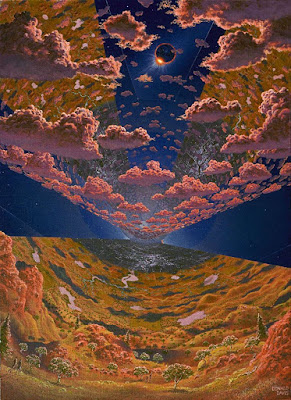According to some people,
I have an unsavory past.
Well, not me, personally. I've never committed any crime worse than exceeding the speed limit, and I'm pretty sure that's true for most of my immediate family as well. We don't tend to be colorful in that way.
 |
| What lurks in your family tree? |
But I have both
English and
German roots, and
the last several generations of my European-American ancestors have lived in the United States. In the eyes of many people around the world,
those simple facts make me and my family complicit, at least by association, with centuries of oppression, racism, and perhaps even genocide.
Not much I can do about it, no matter what my ancestors thought or did. But in the minds of some,
my ancestry and presumed understandings make me a suspect interpreter of culture. How dare I even
try to make art about any culture but my own?
Isn't that tantamount to cultural appropriation?
Yikes! Um, well . . . no, actually. For good reason.
First, like many people, I've tried to live my life in as
fair and unbiased a way as I can, but the fact is that sometimes
we don't realize what we've done or said (or what those things
mean to others--see below) until we've had our
consciousness raised. Every one of us is a product of our culture, and it's
only through experience that we can
learn more appropriate approaches and frames of reference.
 |
| Artist Kristen Uroda created this image for NPR, to help convey the concept of a frame of reference. It's also an illustration of my point that art can help us understand our world. |
In other words,
none of us will get it right 100% of the time. But
cross-cultural understanding can be built, even by unsavory characters such as me. It requires
mutual respect and openness, and
patience with each others' mistakes.
Why try? When we don't understand something, our brain still tries to make sense of it. That's an innate response.
We don't always get it right, because
synthesizing from impressions and separate events is an inaccurate process. But the human brain seems hard-wired to
try.
I've always seen artists (in
all of the arts disciplines) as
crucial to the process of building cross-cultural understanding--and in our ever-shrinking world, where globalization affects lives everywhere,
developing more and better tools for cross-cultural understanding is becoming ever more vitally important.
Yet anytime we
consider a cultural exchange, there tends to arise the
concern over cultural appropriation.
Cultural Exchange is a healthy, desirable,
increasingly necessary function in society. Governments, organizations, and businesses are wise to foster it whenever possible.
Cultural Appropriation is a perversion that wounds, and inhibits mutual growth. It is what happens when
members of a dominant culture ignorantly or disrespectfully use
racial stereotypes or
the outward symbols of a less-dominant culture for its own gain or racist purposes. Unfortunately, people who look like me can stumble all too easily across this line. Consider these examples:
But we've already established that we don't get it right 100% of the time, especially when we encounter an unfamiliar culture.
How and where do we draw the line?
First must come the awareness that there is such a thing as a dominant culture. Moreover,
membership in a dominant cultural group automatically bestows privilege. When you
ignore privilege, you lose an essential perspective that is important for helping you see where that line falls.
That's why people who look like me, and whose ancestors came from the places my ancestors did, are
automatically suspects, when it comes to cultural appropriation. Whether we want to be or not, and whether we think it's right or not, we're privileged.
THAT'S my "unsavory past," noted at the top of this article. When you
automatically have had privilege all your life, it looks "normal."
And it's really easy to ignore, until you've had your consciousness raised to the fact that
everyone else who doesn't look like you has to evaluate situations based on your privilege, and work around it.
After that, drawing the line gets a lot easier.
Cultural exchange is mutual. It enriches members of both cultures.
Cultural appropriation demeans members of one culture for the amusement or gain of more-privileged members of another.
Ultimately, it comes down to RESPECT. Without it, every single one of us is an unreliable witness.
IMAGES: The elaborate family tree chart by Pietro Paolini is from the Castello di Nipozzano in Tuscany, courtesy of The Independent. Many thanks to NPR and its Invisibilia shows, for Kristen Uroda's simultaneous illustration of two of my points. I am grateful to Top Famous Quotes for the Abbe Pierre quote and image, to Iffat Karim and The Rattler for the "Native Americans" example of cultural appropriation, to illustrator Terry Tan, whose illustration, "Cinco de Mayo/Drinko" was posted in a very good article by Matt Moret in ThePittNews, and to Wikipedia for the poster image from a minstrel show in 1900. Many thanks to The Orbit, for the nutshell definition of privilege (the essay that goes with the image is a good one, too). And finally, many thanks to A-Z Quotes, for the Dalai Lama image and quote.































